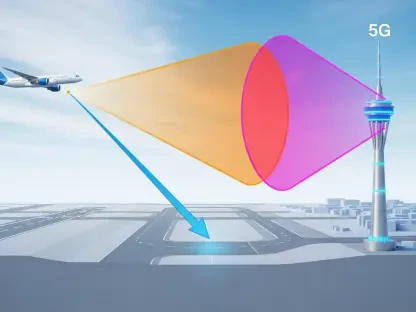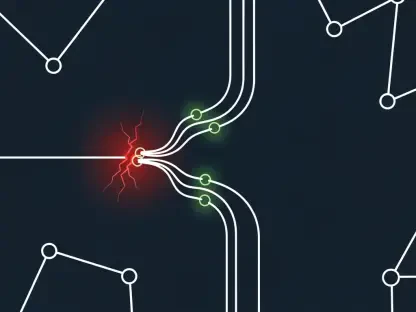I’m thrilled to sit down with Vladislav Zaimov, a seasoned telecommunications specialist with a deep background in enterprise telecommunications and risk management of vulnerable networks. With years of experience navigating the complexities of wireless technology, Vladislav has become a go-to expert on private 5G networks and their critical role in supporting AI-driven industrial transformations. In this conversation, we explore the intersection of radio frequency (RF) design and AI workloads, the evolving landscape of private 5G adoption, and the balance between automation and human expertise in high-stakes environments. We also dive into how data and emerging tools are shaping the future of network design for Industry 4.0.
Can you walk us through why quality RF design is so essential for AI applications in industrial settings?
Absolutely. In industrial environments, AI applications like robotics or computer vision rely heavily on real-time data transmission. If the RF design of a private 5G network isn’t up to par, you get issues like signal interference or dropped connections, which directly disrupt these AI systems. Imagine a robotic arm on a factory floor missing a critical instruction due to latency—that’s a safety risk and a productivity loss. Beyond that, poor network performance erodes the return on investment. Companies pour significant resources into AI, but if the network foundation is shaky, the efficiency and insights they expect just don’t materialize. Quality RF design ensures the signal integrity needed to maximize AI’s potential and justify the spend.
How have you seen the adoption of private 5G networks evolve over the years in your career?
It’s been quite a journey. Initially, private 5G was mostly about connecting basic IoT sensors in specific industries like manufacturing or logistics. But over time, we’ve seen both a widening and deepening of its use. New sectors—think utilities, ports, and even public safety—are jumping on board as they recognize the value of dedicated, secure networks. At the same time, the technology driving these networks has advanced. AI workloads, especially in areas like robotics and real-time monitoring, are pushing private 5G to handle more complex, data-intensive tasks. It’s no longer just about connectivity; it’s about enabling transformative automation.
What specific AI applications are fueling the demand for private 5G in industrial spaces right now?
The biggest drivers today are computer vision and robotics. These technologies need low-latency, high-bandwidth networks to process massive amounts of data on the fly—whether it’s a camera system tracking inventory in a warehouse or a robot navigating a production line. Private 5G delivers the reliability and speed they require. Looking ahead, there’s also growing interest in generative AI, like digital assistants or predictive maintenance tools, which could optimize operations further. These applications are still emerging, but they’re already prompting companies to build networks that can scale for future demands.
In what ways is AI being incorporated into the tools used for designing these private 5G networks?
We’re seeing AI become a powerful assistant in network design, particularly for tasks like simulations and scenario planning. For instance, AI can quickly model how a network might perform under different conditions, saving engineers hours of manual analysis. It’s also useful for automating repetitive steps, like optimizing antenna placement. However, we’re very cautious about maintaining accuracy. Industrial environments are high-stakes, so while AI speeds things up, we ensure every output is validated by human expertise to avoid costly errors.
Why is providing access to data within network design platforms so important for your clients?
Data access is a game-changer. When clients can tap into the data generated during network design—like signal coverage maps or performance metrics—they can feed it into their own AI initiatives. This might mean improving operational efficiency or even developing custom applications tailored to their needs. For us, it’s a win-win: the data helps us refine our tools and better understand industry trends, while for enterprises, it unlocks additional value from their investment in private 5G. It fosters collaboration and innovation across the board.
What are some of the toughest challenges when designing private 5G networks for harsh industrial environments?
Industrial settings are incredibly demanding. You’ve got physical obstacles like metal racks, concrete walls, and moving machinery that can interfere with signals or create dead zones. Reflective surfaces can cause multipath issues, where signals bounce around and distort. Designing around these factors requires precise modeling and often on-site adjustments. That’s why human expertise remains critical—AI can suggest solutions, but an engineer’s understanding of the unique quirks of a factory or mine ensures the network actually works as intended in the real world.
Do you envision a future where AI could completely take over the design of private 5G networks?
Not in the near term, honestly. AI is fantastic for handling data-heavy tasks and offering recommendations, but it still has limitations in dealing with the nuances of complex industrial projects. It struggles with unpredictable variables or the need for contextual judgment—things an experienced engineer brings to the table. For AI to take a bigger role without oversight, we’d need breakthroughs in its ability to interpret environmental intricacies and prioritize safety. Until then, it’s a valuable tool, but humans are still in the driver’s seat.
What’s your forecast for the role of private 5G and AI in shaping the future of industrial operations?
I believe we’re just scratching the surface. Private 5G will become the backbone of Industry 4.0, enabling seamless connectivity for increasingly sophisticated AI applications. We’ll see more integration of generative AI for things like real-time decision-making or predictive analytics, which will drive efficiency to new levels. At the same time, network design will continue to evolve, balancing automation with precision to handle denser, more dynamic workloads. My forecast is that over the next decade, these technologies will redefine how industries operate, making them smarter, safer, and more resilient—but only if we keep getting the fundamentals right.









